Pump Technologies

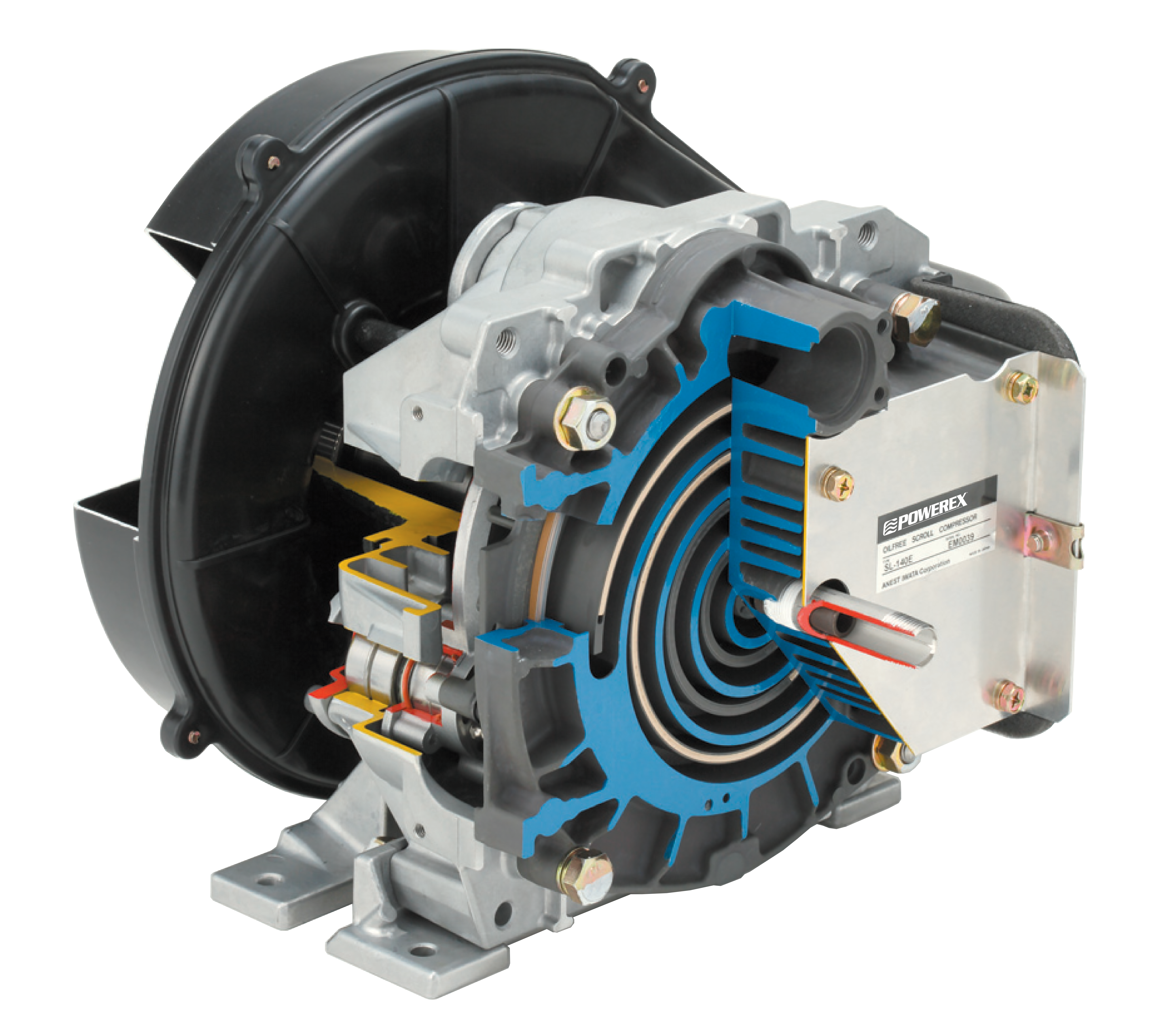
Principles of Operation:
As the scroll orbits from No. 1 to No. 4 positions, a crescent-shaped cavity is gradually reduced, compressing the air and exhausting it through the final discharge point at the center. During operation, all the gas passages are in various stages of compression at all times, resulting in nearly continuous compression and discharge.
Benefits:
- No oil anywhere
- Extremely quiet
- Very low maintenance
- 145 PSI units available
- NFPA 99 compliant
- Available in an enclosed cabinet
Oil-less Reciprocating Piston
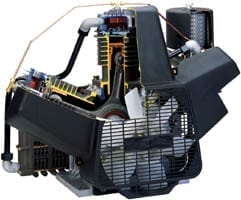
Principles of Operation:
The oil-less composite piston slides up and down within a low friction, wear-resistant aluminum cylinder, compressing air on the upstroke. The discharge air is cooled via an air to air after cooler. The multi-finned compressor cylinder is cooled by a dedicated fan (2 through 15 hp) as well as the fan blades on the flywheel. Compressors are single stage 1 through 3 hp and two stage 5 through 15 hp.
Benefits:
- No oil anywhere
- Composite piston reduces bearing heat
- Dual cooling flywheel and fan
- Corrosion resistant coating extends valve and ring life
- NFPA 99 compliant
Lubricated Piston
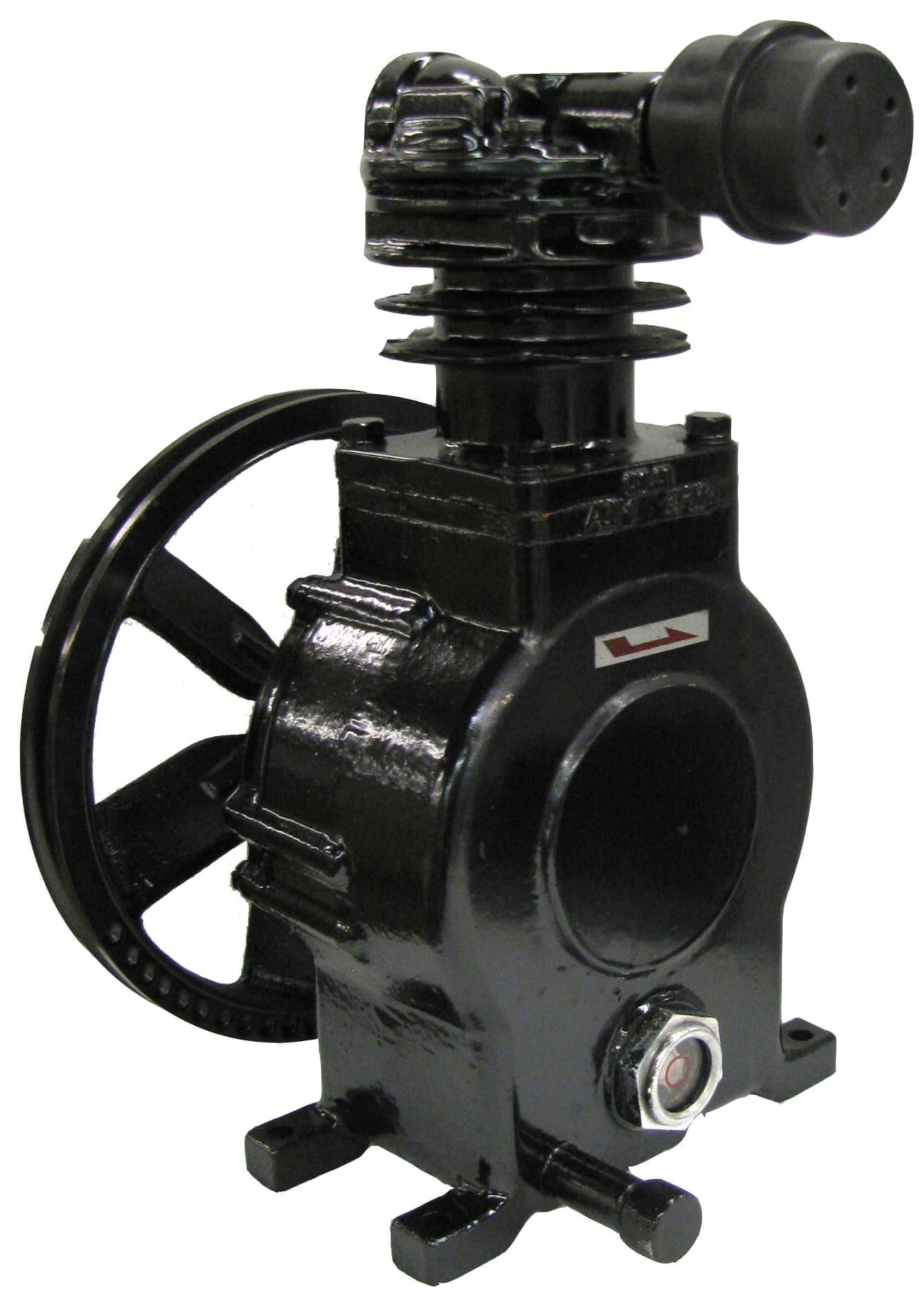
Principles of Operation:
The oil lubricated piston slides up and down within a cast iron cylinder, compressing air on the upstroke. The compressor’s crankshaft, wrist pin, and cylinder walls are lubricated by oil within the crankcase. Robust and reliable, our lubricated compressors are a perfect choice.
Benefits:
- Up to 250 PSI
- Single or two stage
- Oil flooded for long bearing piston and ring life
- NFPA 99 Instrument Air Systems
Dry Claw
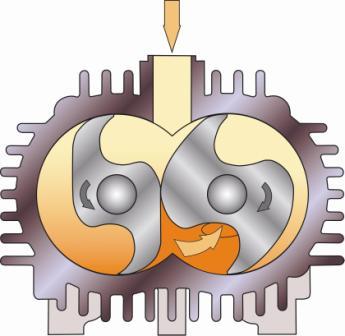
Principals of operation:
Inside the pump housing, two claw shaped rotors take in air as they rotate in opposite directions. The air is compressed by the rotors, then discharged through a silencer to atmosphere. The pumping chamber is dry and there is no contact between the rotors or the cylinder wall.
Benefits:
- Oil free compressor chamber
- Extremely low maintenance
- Air cooled
- Can be used as a dedicated WAGD
Oil-less Rotary Vane
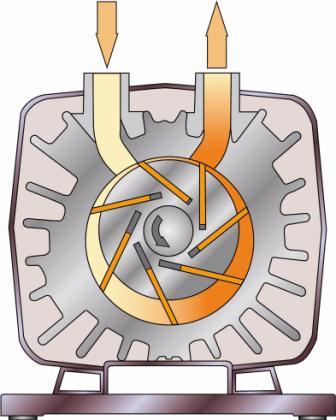
Principles of Operation:
A rotor is mounted eccentrically in the pump cylinder and contains several sliding vanes. As the rotor turns, centrifugal force causes the vanes to slide outward, creating a seal against the cylinder wall. The vanes are constructed of a self-lubricating graphite composite material which allows them to operate against the cylinder wall without the need for any other sealing or lubricating liquid. As a result of the offset rotor, a succession of variable volumes is formed in the cylinder housing creating the flow of vapor through the pump. Vapor is pulled into the pump inlet which is then compressed and discharged through the exhaust to atmosphere.
Benefits:
- No oil anywhere
- Long vane life
- Low vibration
- Graphite composite vanes
Oil Sealed Rotary Vane
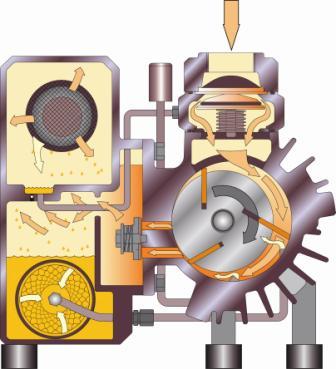
Principles of Operation:
A lubricated rotary vane pump has a series of sliding vanes attached to a rotor in the pump cylinder. As the rotor spins, centrifugal force causes the vanes to slide outward to form a seal on the cylinder wall with oil that is injected into the pumping chamber. Air is pulled into the pump inlet which is then compressed and discharged into the exhaust box. The sealing oil is filtered and re-circulated within the pump via oil filters which eliminates 99.9% of lubricating oil from the exhaust.
Benefits:
- Air cooled design
- Direct drive
- 29.3″ Hg end vacuum
- Anti suckback valve
- Oil flooded for lubrication and heat dissipation






